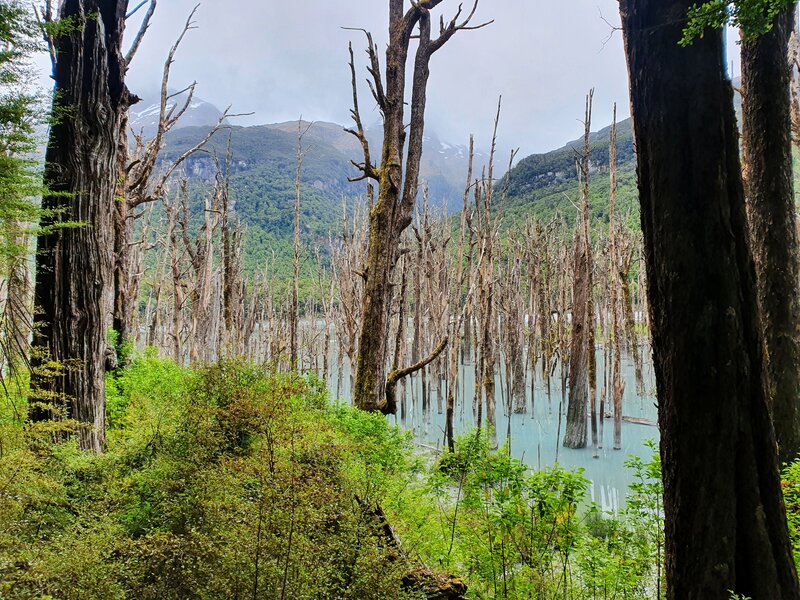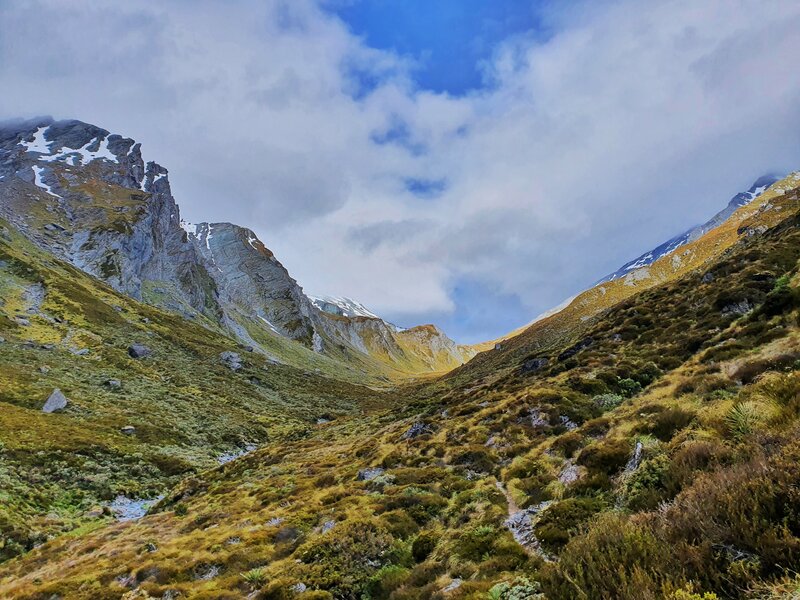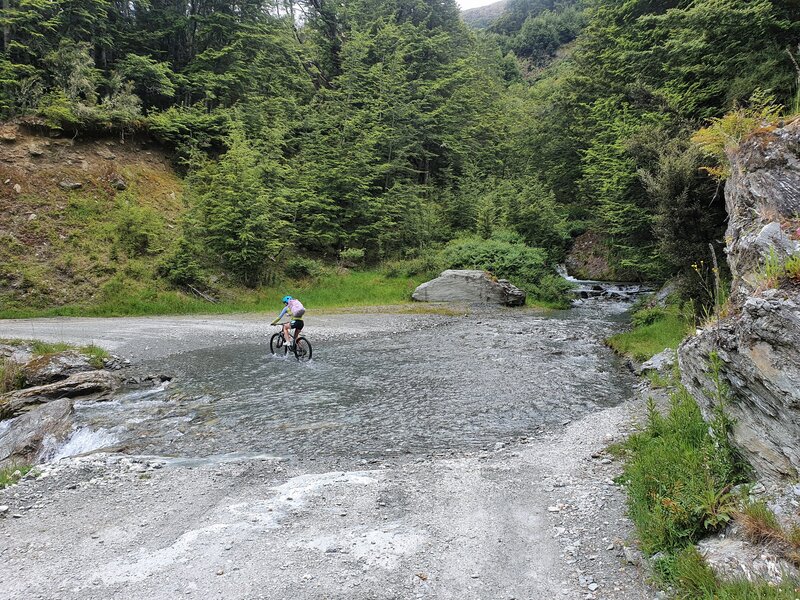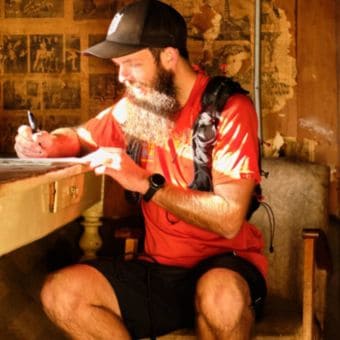The Rees Dart Track transport issue is something that puts people off from doing the track. But there are at least 6 options, including Rees Dart shuttle buses.
The two things that put some people off the Rees Dart Track are the remote trailheads, and because they’re 35km apart.
Having completed this track, I have been through the options and getting from Queenstown to Rees Dart Track isn’t that tough logistically afterall. I’ll cover these in the post, and mention which option I chose.
Before getting started, here are the two trailheads for the :
Note: This is primarily a track that should only be completed in the summer and shoulder seasons, like many of the Mount Aspiring National Park walks.
THE REES DART TRACK TRANSPORT OPTIONS
1. Self-Drive
2. Car Relocation Services
3. Buses/Shuttles
4. Key Swaps/Two Cars
5. Hitchhiking
6. Biking
1. SELF DRIVING TO THE REES DART TRACK

If you want to do an out-and-back walk on the Rees-Dart track, this is the best option. With most people doing this on the Rees River side of the track.
There are no popular day trips on the Rees/Dart like the Routeburn, but you can do an out and back overnight to Daley’s Flat, Kea Basin, or Rock Shelter which would be cool. I need to go checkout Kea Basin, which is the gateway to the summit of Mount Earnslaw.
Or you could make it all the way to Dart Hut/Cascade Saddle and return the way you came…but because you’re halfway through the track by then, you should do the full loop.
Note: When driving there are some fords you need to cross to get to both trailheads. They were small when we were there (biking through them was fine), but if there’s lots of rain they can become impassable.
2. REES DART CAR RELOCATION SERVICES

A car relocation is a popular Routeburn Track transport option, and it’s possible to do this on the Rees Dart Track.
It’s only 35km between the two tracks, but it’s a bit of a drag given the locations of both car parks. Luckily someone can drop you off at one end and then leave your car at the other end for you to collect when you finish.
TrackHopper.co.nz is the premium car relocation service for the Rees Dart Track. It does seem a little on the expensive end at $180, but that will seem like a small amount when you’ve got your own car at the end of the hike.
It also means you don’t have to be back at any specific time, nor have to go and pick up cars/bikes at the other end.
3. REES DART SHUTTLE/BUSES

There are daily bus services that run from both Queenstown and Glenorchy to both ends of the Rees/Dart track (provided at least 2 people have booked).
There’s one company, Info & Track that offers the service. At the time of writing (summer 2023/24), the costs are:
- One way between Queenstown and Rees/Dart trailheads: $69 (adults)/$47 (child).
- One way between Glenorchy and Rees/Dart trailheads: $44 (adults)/$27 (child).
As there’s no phone reception out on the track/trailheads, you’ll need to plan your pickup times before you begin the hike and double the costs.
Check the timetable and book online here:
Note: You could also drive from Queenstown to Glenorchy then catch the bus from there. This will give you the option of doing other amazing walks near Glenorchy after you finish the track.
You can also look up this page for other NZ track transport shuttle companies who you could ask if Track & Info don’t have any options.
4. REES DART TRACK KEY SWAPS/TWO CARS

If you have other friends who are keen to do this track around the same time a key swap is a great Rees Dart Track transport option.
Key Swapping:
If you’ve got another group of friends who are planning to do the Rees Dart Track and either want to do it in fewer days and/or don’t mind walking in the opposite direction, then leaving a car at each end of the track and swapping keys when you pass each other during the track is a great option.
The only time this gets awkward is if one party decided to do the Cascade Saddle side trip on a whim when it wasn’t planned. But the logistics of the key swap for the Rees Dart Track are straightforward.
Two Cars:
If you’re planning to hike with friends, you can drive two cars to one end of the trailhead. Leave one car there, and then all drive to the other trailhead to begin the walk. You can figure out the rest from here 🙂
This is a solid option. It’s only annoying having to double back on the road a little bit at the start and finish of the track.
5. HITCHHIKING

I’m a massive fan of hitchhiking in NZ, but this isn’t the most practical place to hitchhike as you could be waiting a long time to get to the trailheads.
You could hitchhike to/from Paradise (on the way to the Chinaman’s Bluff end) and the Rees Valley Road turnoff, but then you’ve still got a good hike in/out unless you get lucky with other cars going in. That said, I’d say your chances of a lift if a car does come past are pretty good
6. BIKING BETWEEN TRAILHEADS

This option isn’t going to be for everyone, but it worked for my friend and I.
We drove to Chinaman’s Bluff where we parked and unloaded our bikes/packs. We then biked the 35km or so to the Muddy Creek carpark. This took us longer than we thought it would…the crossing of the fords wasn’t the issue, it was the hills on the Rees Valley Road that caught us off guard.
Once we reached Muddy Creek car park we locked up our bikes to the information sign and began the adventure. You can see the Strava file for the bike ride here (it took us a little over 2.5 hours).
Once we finished the track we jumped in the car at Chinaman’s Bluff and went to pick up the bikes at the other end.
Biking with large packs isn’t going to be everyone’s cup of tea, and if you’ve got super expensive bikes it may not be the best idea to lock them up in a remote car park for days at a time (we had zero issues).
This is a cost-effective solution…if you’ve got the fitness to hike on the track post the bike ride.
I hope this has helped you understand all the Rees Dart Track transport options. It’s a great hike, especially the side trip to Cascade Saddle.
If you’ve got any questions about how to get to the Rees Dart track, let me know in the comments or email jub@churnewzealand.com and I’ll do my best to help.
RELATED POST: HIRING A PLB IS RECOMMEND FOR THIS TRACK

Hey, it’s Jub here. I’m the guy behind Chur New Zealand, helping you have the best time hiking, trekking, walking…whatever you want to call it…in NZ. I’m based in Queenstown and am always out and about exploring trails, old & new. If you have any questions, reach out.

Hi there, love the blog. Driving from muddy creek and chunamans bluff: do you need 4WD or is a standard car ok? A little worried about the fords mentioned to drive through! Cheers, Sarah
Hey Sarah,
Thanks for the kind words. Provided there’s been no massive amounts of rain, a standard car has got me between them no problems. Have fun out there 🙂
Hey there. Where is the view point from in photo 5 under hitchhiking? Looks stunning. Thanks
Hey Rachel,
That’s from Cascade Saddle looking back towards the Matukituki side of Aspiring 🙂 Epic spot.
Chur, Jub
Hey Jub, thanks for the info! I’m trying to work out the logistics of my hikes for next January and I was thinking about connecting the Rees-dart Track to the Routeburn Track. Do you think walking from Chinaman’s Bluff to the eastern part end of the Routeburn Track is feasible? I’m looking at Gaia GPS and the only thing that would concern me is the Dart River. Is that a passible river in the summer? Plan would be to go from Daley’s Flat Hut to Slyvan Campsite, sleep, then start Routeburn in the morning.
Hey Matt,
While it’s possible, it’s not an easy river to cross and you’ll want a good weather window leading up to and during the crossing.
At worst you’ll be able to hitchhike fairly easily!
Cheers,
Jub